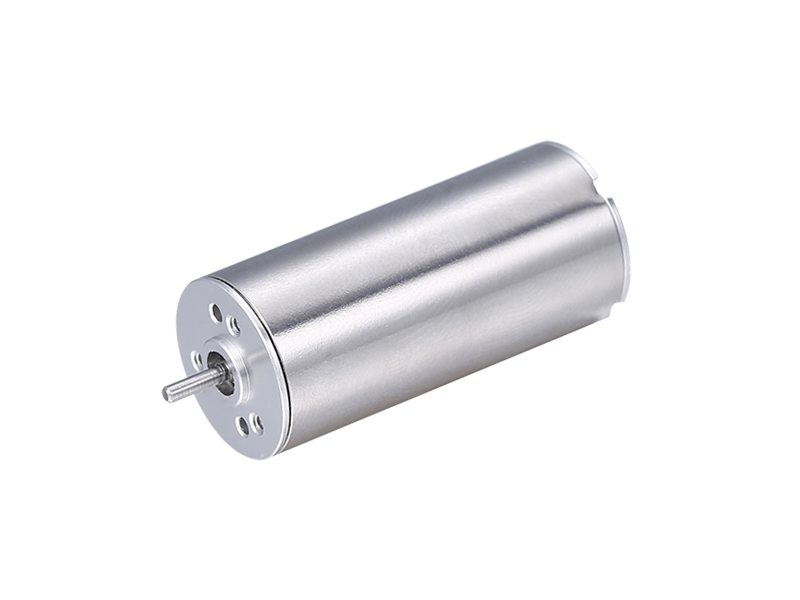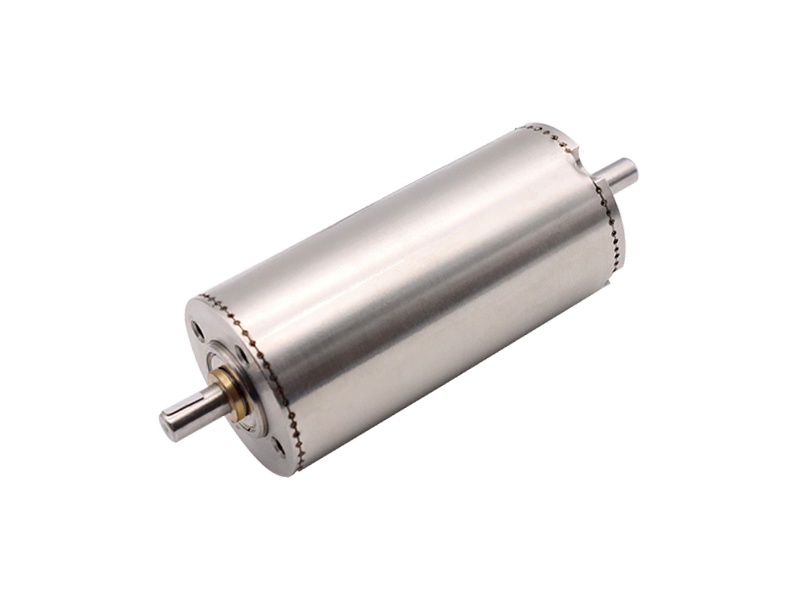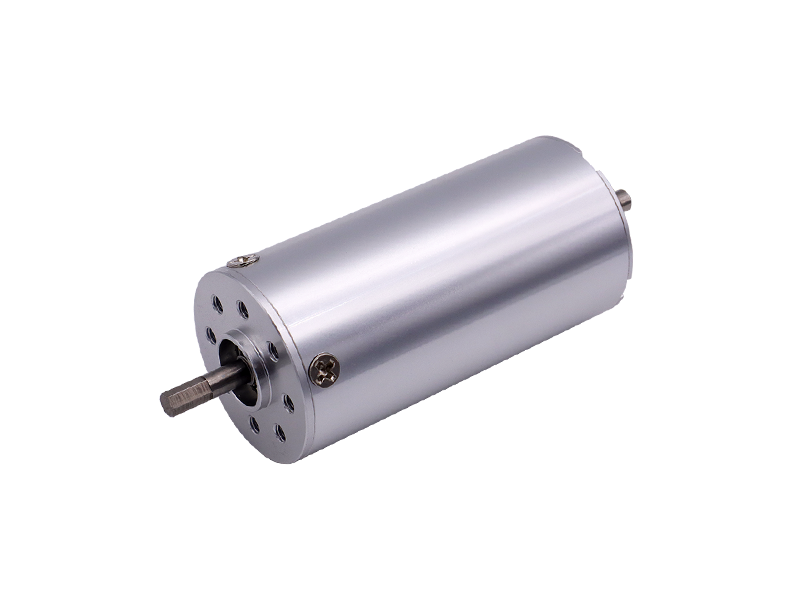Advantages, disadvantages, and parameter analysis of brushless motors.
1、 What is a brushless motor
Brushless DC motor is a typical electromechanical integrated motor that has emerged with the development of semiconductor electronics technology. It is a product of the combination of modern electronic technology (including electronic power, microelectronics technology), control theory, and motor technology. Unlike ordinary brushed DC motors that use armature winding rotation for commutation, brushless motors are motors that use electronic commutation and magnetic steel rotation. Ordinary DC motors use carbon brushes for commutation, which has significant drawbacks, including:

1. The sparks generated by mechanical commutation cause friction between the commutator and the electric brush, electromagnetic interference, high noise, and short lifespan.
2. Complex structure, poor reliability, and frequent failures require frequent maintenance or replacement of carbon brushes.
3. Due to the existence of the commutator, the further decrease in rotor inertia is limited, which affects the dynamic performance.
The naming of brushless DC motors indicates their characteristics: they have similar motor performance to DC motors and do not have carbon brushes. Brushless motors achieve continuous operation through electronic commutation;
The commutation mode of brushless motors is divided into square wave and sine wave drive. In terms of their position sensors and control circuits, square wave drive is relatively simple and inexpensive, and has been widely used. At present, the vast majority of brushless motors use square wave drive, while some applications with high control requirements use positive wave or FOC (vector control) control.
2、 Technical advantages and disadvantages of brushless motors
1. Technical advantages of brushless motors:
1.1. Good controllability and wide speed range.
1.2. High reliability, long working life, and no need for frequent maintenance.
1.3. High power factor, high working efficiency, and high power density.
2. Similarly, brushless DC motors also have certain technical disadvantages
2.1. Electronic controllers are required to work, which increases technical complexity and cost.
2.2. The permanent magnet material of the rotor limits the operating environment of the motor and is not suitable for high temperature environments.
2.3. There is significant torque fluctuation, which limits the application of the motor in high-performance servo systems and low-speed ripple systems.
3、 Basic parameters of brushless motor
1. Naming: The naming principles for motors vary from manufacturer to manufacturer. Some are named based on the diameter and height of the motor stator, while others are named based on the diameter and height of the motor. Our motors are all named based on the diameter and height of the motor. For example, the BL3640 motor refers to a motor with a diameter of 36mm and a height of 40mm.
2. Stator diameter: The diameter of a silicon steel sheet stator
3. Stator height (thickness): The height of the silicon steel sheet stator
4. Number of iron core poles (number of slots): The number of slots in the stator silicon steel sheet
5. Magnetic pole number (pole number): the number of magnetic poles on the rotor
6. Number of turns (T): The number of turns of the enameled wire wound on the stator slot of the motor
7. KV value: The operating speed of the motor, the higher the KV value, the higher the motor speed. The motor speed is equal to the KV value multiplied by the operating voltage.
8. No load current: the operating current of a motor without any load at a specified voltage
9. Phase resistance: The resistance value between two contacts after the motor is connected
10. Maximum continuous current: the maximum safe current for the operation of the motor
11. Maximum continuous power: The maximum safe power at which the motor operates
12. Motor weight: The weight of the motor
13. Shaft diameter: the diameter of the motor shaft
4、 Analysis of Several Important Parameters of
Brushless DC Motor
1. Rated voltage
The suitable working voltage for brushless motors is actually very wide, and the rated voltage is determined by specifying the load conditions. For example, the BL3640 motor specifies a load of 0.1N. M and its rated operating voltage is 12V. If the load is reduced, the motor can operate at a higher voltage (corresponding to an increase in motor speed). But this working voltage is not infinitely increasing, mainly limited by the highest frequency and power supported by the electronic controller. So, the rated voltage is determined by the working environment.
2. KV value
Brushed DC motors are labeled with rated speed based on their rated operating voltage, while brushless motors introduce the concept of KV value, allowing users to intuitively know the specific speed of the brushless motor at a specific operating voltage. Actual speed=KV value * working voltage, which is the actual meaning of KV, which is the speed per minute under 1V working voltage. The speed of a brushless DC motor is directly proportional to the voltage, and the speed of the motor increases linearly with the rise of voltage. For example, the speed of the BL3640-400KV motor at 12V voltage is: 400 * 12=4800RPM (RPM, revolutions per minute). The KV value is inversely proportional to the number of turns.
3. Torque and speed
Torque: The driving torque generated by the rotor in a motor that can be used to drive mechanical loads. We can understand the power of the motor.
Speed: The speed of the motor per minute.
The torque and speed of a motor are always in a trade-off relationship within the same motor. It can be basically assumed that the product of torque and speed is a constant, that is, the higher the speed of the same motor, the lower its torque, and vice versa. It is impossible to require the same motor to have a higher speed and torque, and this rule applies to all motors. The speed and torque of motors with the same structure or volume can be balanced by adjusting the permanent magnet grade, thickness, height, stator outer diameter, stator height, stator winding parameters (wire diameter, number of turns), air gap, etc.
4. Maximum current and maximum power
Maximum current: The maximum current that the motor can withstand and operate safely
Maximum power: The maximum power that the motor can withstand and operate safely
Each motor has its own upper limit of power, and the maximum power is this limit. If the working condition exceeds this maximum power, it will cause the motor to burn out due to high temperature. Of course, this maximum power is also determined based on the specified operating voltage. If it is at a higher operating voltage, the reasonable maximum power will also increase. This is because: Q=I2, the heating of a conductor is directly proportional to the square of the current. At higher voltages, if the same power is used, the current will decrease, resulting in a decrease in heating and an increase in maximum power. This also explains why a large number of 22.2V or even 30V batteries are used to drive multi axis aircraft on professional aerial vehicles. Brushless motors under high voltage have lower current, less heat generation, and higher efficiency.
5. Slot pole structure (N: number of slots, P: number of poles)
The common internal rotor brushless motor structures for models include: 3N2P (commonly used for induction motors), 12N4P (most internal rotor motors)
The common structures of external rotor brushless motors in models include 9N6P, 9N12P, 12N8P, 12N10P, 12N14P, 18N16P, and 24N20P.
The reason for the low number of poles in the model's internal rotor brushless motor is that currently internal rotor motors are mostly used for deceleration, so the required speed is relatively high. Electronic speed=actual speed * number of motor poles. The maximum electronic speed supported by electronic controllers is often a fixed number, so if the number of motor poles is too high, the maximum supported motor speed will decrease. Therefore, the current number of poles for inner rotor motors is within 4.
Regarding the 12N4P internal rotor motor: It belongs to integer slot motors and is widely used in model internal rotor motors. The motor uses single-layer winding distributed winding.
The outer rotor motors used in the model are all fractional slot motors, and their structural characteristics and performance are as follows:
1. N must be a multiple of 3, and P must be even (magnetic steel must be paired, so it must be even).
2. The smaller the P-number, the higher the maximum speed. For example, the maximum speed of 12N10P is definitely lower than that of 12N16P, and vice versa.
3. If N is greater than P, the relative speed is higher. The maximum speed of 9N6P is definitely higher than 9N12P, and vice versa.
4. The larger the N and P values, the stronger the torque. Torque, 12N16P is greater than 12N14P is greater than 12N10P.
5. N and P cannot be divided evenly, such as 12N6P.













